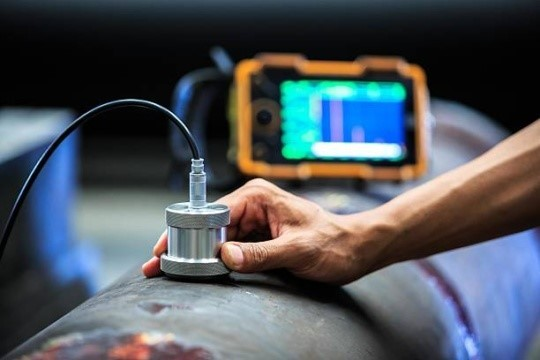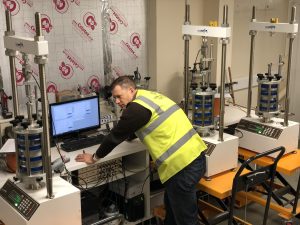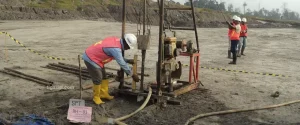Safety and reliability are non-negotiable in construction. Whether it is a bridge, high-rise building, dam, or industrial facility, structural integrity must be ensured from the early stages of design all the way through a structure’s lifecycle. One of the most important tools that professionals rely on to assess the condition of these structures is Non-Destructive Testing (NDT).
Non-Destructive Testing refers to a collection of techniques that evaluate the strength, durability, and safety of materials or structures without causing any damage. These methods help detect internal and surface-level flaws that could affect the performance of a structure, all while keeping it intact and operational. As infrastructure grows more complex, the demand for advanced NDT technologies continues to increase.
This article explores recent advancements in NDT methods, their role in ensuring structural integrity, and how they support smarter construction and maintenance decisions.
Why Non-Destructive Testing Matters
NDT allows engineers to inspect materials or components without cutting, damaging, or altering them. This makes it possible to assess safety while keeping systems in service. Instead of tearing down walls or dismantling components to look for faults, NDT methods offer a more efficient and cost-effective solution.
For example, a concrete beam may appear sound from the outside, but internal cracks or voids could compromise its strength. Using NDT, engineers can detect these issues early and take action before they lead to failure. This proactive approach not only saves money but also helps avoid risks to public safety.
NDT is especially useful in construction, transportation, energy, and manufacturing industries, where equipment and structures must perform reliably under heavy loads or in extreme conditions.
Key Non-Destructive Testing Methods
Several NDT techniques are commonly used in structural assessment. Each method has specific advantages depending on the type of material, the kind of defect being investigated, and the environment.
1. Ultrasonic Testing (UT)
Ultrasonic testing uses high-frequency sound waves to detect imperfections inside a material. When the sound waves hit a flaw such as a crack or void, they bounce back and are picked up by a receiver. The strength and timing of these signals help inspectors determine the size and location of the defect.
Recent innovations include portable digital ultrasonic devices that give real-time feedback and are easier to use on site
2. Ground Penetrating Radar (GPR)
GPR uses electromagnetic waves to scan below the surface of concrete, soil, or other materials. It helps detect embedded objects like rebar, pipes, or voids. GPR has become more advanced with the integration of 3D imaging and data visualization tools that make results easier to interpret.
This method is especially helpful in subsurface analysis and structural inspections before drilling or coring.
3. Radiographic Testing (RT)
Radiographic testing uses X-rays or gamma rays to see through solid materials. Like a medical X-ray, it shows a detailed image of the interior of a structure. Radiographic methods are ideal for identifying welding defects, corrosion, or cracks in pipelines and metal components.
With digital radiography, images are now available instantly and can be enhanced for clearer inspection.
4. Magnetic Particle Testing (MT)
This method is used to find surface and near-surface defects in ferromagnetic materials. When a magnetic field is applied to a material, any flaws interrupt the field and attract magnetic particles, which highlight the defect. MT is fast, accurate, and suitable for detecting cracks in welds and joints.
5. Visual Testing (VT) and Drones
While visual inspection is the oldest and most basic form of NDT, it has also seen advancements. Drones equipped with high-resolution cameras and sensors now allow engineers to visually inspect tall or hard-to-reach areas safely and efficiently. These images can be processed using software that detects cracks or deformations automatically.
New Developments in Non-Destructive Testing
The advancement in digital technology and artificial intelligence is transforming how NDT is performed. Below are some recent trends shaping the future of NDT.
- Data Integration and Cloud Storage
Advanced NDT tools can now upload inspection results directly to the cloud. This allows teams to access and compare data remotely, track changes over time, and make informed decisions faster. - Automated NDT Systems
Robotic crawlers and drones equipped with sensors can perform repetitive testing tasks in dangerous environments. This improves safety and reduces human error. - AI and Machine Learning
Artificial intelligence is being used to analyze large volumes of inspection data. It can identify patterns, classify defects, and even predict structural failures before they happen. - Non-contact Testing
Laser-based and thermal imaging tools allow for contactless testing. These are useful when inspecting delicate, hot, or moving parts, such as in industrial plants or electrical systems.
These advancements mean more accurate results, faster inspections, and better protection of both assets and lives.
The Importance of Non-Destructive Testing in Structural Integrity
Non-Destructive Testing plays a key role in ensuring that a structure meets both design and safety standards throughout its service life. By identifying issues early, engineers can recommend targeted repairs, extend the lifespan of assets, and minimize downtime.
In high-risk structures such as dams, towers, and bridges, NDT helps assess performance after natural events like earthquakes or floods. For new construction, it verifies workmanship quality and ensures compliance with specifications. In maintenance, it helps prioritize repairs and manage lifecycle costs effectively.
You can find internationally accepted NDT standards and guidance from bodies like the American Society for Nondestructive Testing (ASNT) and the British Institute of Non-Destructive Testing (BINDT).
Non-Destructive Testing is an essential part of modern structural safety. With technology continuing to evolve, its role in maintaining integrity, preventing failure, and guiding better construction decisions will only grow stronger. For comprehensive support in structural assessment and testing, AOA Geo-Net offers trusted geotechnical expertise and reliable NDT solutions.




